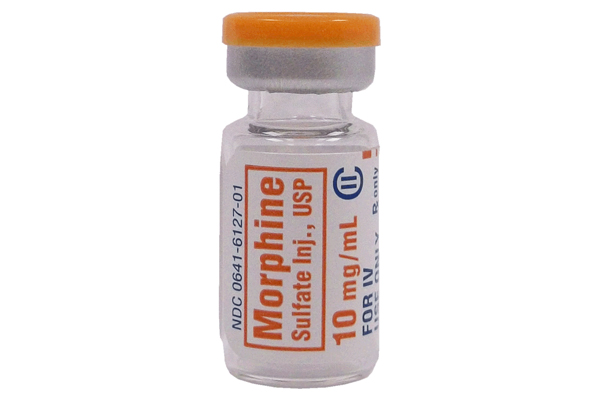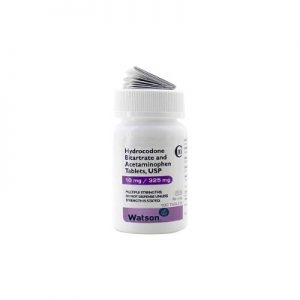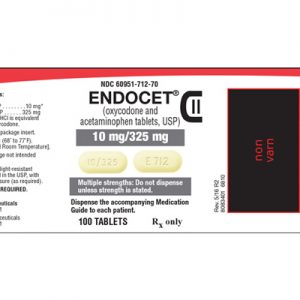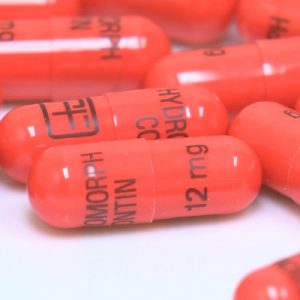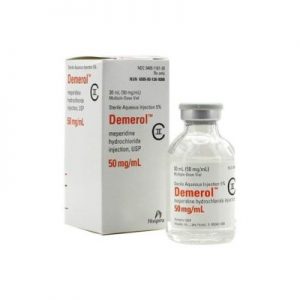Description
Patient Information Leaflet
Morphine Sulfate Injection 10 mg in 1 ml
Morphine Sulfate Injection 15 mg in 1 ml
Morphine Sulfate Injection 30 mg in 1 ml
Morphine Sulfate
Morphine Sulphate 10mg 1ml, Read all of this leaflet carefully before you start using this medicine because it contains
important information for you.
• Keep this leaflet. You may need to read it again.
• If you have any further questions, ask your doctor, pharmacist or nurse
• This medicine has been prescribed for you. Do not pass it on to others. It may harm them,
even if their symptoms are the same as yours.
• If you get any side effects, talk to your doctor, pharmacist or nurse. This includes any
possible side effects not listed in this leaflet. See section 4.
In this leaflet, Morphine Sulfate Injection 10 mg in 1 ml, 15 mg in 1 ml or 30 mg in 1 ml will
be called Morphine Sulfate Injection.
What is in this leaflet:
1. What Morphine Sulfate Injection is and what it is used for
2. What you need to know before you are given Morphine Sulfate Injection
3. How Morphine Sulfate Injection will be given to you
4. Possible side effects
5. How to store Morphine Sulfate Injection
6. Contents of the pack and other information
1. What Morphine Sulfate Injection is and what it is used for
Morphine Sulfate Injection belongs to a group of medicines called narcotic analgesics which
help relieve severe pain.
Morphine Sulfate Injection is for the treatment of severe pain, to help with breathingwhich
becomes difficult because fluid has collected in the lungs (pulmonary oedema) due to heart
failure. It can also be given prior to having an operation.
2. What you need to know before you are given Morphine Sulfate Injection
You must not be given Morphine Sulfate Injection if you:
• Are allergic to morphine sulfate or any of the other ingredients of this medicine (listed in
section 6);
• Have been told you have a tumour of the adrenal gland near your kidney called
phaeochromocytoma;
• Have severe problems with breathing;
• Have increased pressure on the brain, have just had a head injury or if you are
unconscious;
• Are suffering from acute alcoholism;
• Are at risk from a blocked intestine (paralytic ileus);
• Have severe stomach cramps caused by a condition known as biliary colic;
• Are suffering from severe diarrhoea.
Morphine Sulfate is never given to patients in a coma.
If any of the above applies to you, do not use this medicine and talk to your doctor or nurse.
Warnings and precautions
Talk to your doctor or pharmacist before you are given Morphine Sulphate 10mg 1ml Injection if
you:
• Are using drugs or have used drugs in the past;
• Suffer from asthma (your doctor may decide to administer morphine injection if your
asthma is controlled. However, you should not be giv
• Monoamine oxidase inhibitors (MAOIs) such as moclobemide or phenelzine used in the
treatment of depression;
• Drugs to help you sleep or reduce your anxiety (hypnotics and anxiolytics) e.g. diazepam
• Anticholinergic drugs to relax smooth muscle and regulate the heart rate e.g. atropine
• Any other medicine, including medicines obtained without a prescription;
• Tricyclic antidepressants, which are used in the treatment of depression;
• Medicines used to treat mental illnesses, including schizophrenia (e.g. Chlorpromazine,
haloperidol);
• Medicines used for diarrhoea (e.g. Loperamide, kaolin);
• Medicines which are used as premedication before operations and after heart attacks such
as atropine;
• Medicines used to treat nausea and vomiting, such as metoclopramide or domperidone;
• Mexiletine, used to control heart rhythm;
• Some antihistamines, used to treat allergies, hayfever and asthma;
• Certain antibiotics, used to treat infections (e.g. Ciprofloxacin and linezolid);
• Selegiline, used in the treatment of Parkinson’s disease;
• Pethidine, used to treat pain.
If any of the above applies to you talk to your doctor or nurse.
Morphine Injection with food, drink and alcohol
You should not drink alcohol whilst being given Morphine Injection, as it will increase its
effects.
Pregnancy and breast-feeding
You should not be given morphine if you are pregnant or think you might be pregnant unless
you have discussed this with your doctor first. If you are given morphine during pregnancy
and become dependent on it, there is a risk that the new-born baby may also be dependent
and suffer from withdrawal symptoms following delivery. If you are given Morphine Sulphate 10mg 1ml during
labour there is a risk that you could be sick and have breathing difficulties, or the baby could
have difficulty starting breathing. If you are breast-feeding, ask your doctor for advice before
using this medicine.
Driving and using machines
Morphine Sulfate Injection may cause drowsiness. If this happens to you, do not drive or use
machinery.
Do not drive whilst using this medicine until you know how this medicine affects you. It may
be an offence to drive if your ability to drive safely is affected. There is further information
for patients who are intending to drive in Great Britain
Morphine Sulfate Injection contains sodium
Morphine Sulfate Injection contains 0.24 mg of sodium per ml and may therefore not be
suitable for you if you are on a controlled sodium diet. Tell your doctor or nurse before you
are given Morphine Sulfate Injection if this applies to you.
3. How Morphine Sulfate
Injection will be given to you Important:
Morphine Sulfate Injection will be given to you by a doctor or nurse in hospital.
Your doctor will choose the dose that is right for you.
Recommended dose:
Adults
• The recommended adult dose for relief of pain by subcutaneous injection (an injection
underneath the skin) or intramuscular injection (an injection into a muscle) is 10mg every
four hours, if necessary;
• However, the amount may range from 5 mg to 20 mg depending on how severe your pain
is and how you respond to the drug;
• If the drug is injected into a vein, the recommended dose for an adult is 2.5 mg to 15 mg
with at least 4 hours between doses;
• Your doctor or nurse may adjust the dose of your medicine and the number of injections
you are given each day until your pain is relieved.
Elderly
If you are elderly, severely run down including feeling weak and feeble, or have liver and
kidney problems the dose will be lower. You may also be given a reduced dose if you suffer
from any of the conditions listed in section 2 entitled “Talk to your doctor or pharmacist
before Morphine Sulphate 10mg 1ml Injection is given to you if you:”
Children
Morphine Sulphate 10mg 1ml Injection is not for use in children.
If you think you have been given more Morphine Sulphate 10mg 1ml Injection than you should
As this medicine will be given to you whilst you are in hospital, it is unlikely that you will be
given too little or too much, however, tell your doctor or nurse if you have any concerns.
Symptoms of serious overdose include breathing difficulties, low blood pressure with your
heart finding it difficult to pump blood around your body, a deepening coma, feeling cold, fits
especially in infants and children and rapid break down of muscle tissue progressing to
kidney failure.
If you have these symptoms, you will be given another medicine called Naloxone to reverse
the effects of Morphine Sulphate 10mg 1ml Injection.
If you have any further questions about the use of this medicine, ask your doctor or nurse.
4. Possible side effects
Like all medicines this medicine can cause side effects, although not everybody gets them.
Tell your doctor or nurse immediately if you experience the following serious side effect:
• A severe allergic reaction, such as breathing difficulties, shock or low blood pressure. If you
suffer such a reaction, you should not be given any more morphine. Your doctor will decide
on the appropriate treatment for allergic reactions.
Difficulty in breathing and physical and psychological dependence are possible serious side
effects. It is possible that you could become dependent on morphine.
Side effects that are common include:
• Drowsiness;
• Feeling sick or being sick;
• Constipation;
• Dizziness.
Apart from constipation, these side effects tend to disappear with time.
Side effects that are less common include:
• Sweating;
• Feeling faint on standing up;
• Small pupils (in the eye);
• Blurred vision;
• Double vision or other changes in vision;
• Mental clouding or confusion;
• Mood changes, feeling extremely happy for no particular reason, or a feeling of emotional
and mental unease (dysphoria);
• Imagining things (hallucinations);
• Headache;
• Vertigo;
• Facial flushing;
• Dry mouth;
• Difficulty or pain in passing urine;
• Passing less urine than usual;
• Biliary spasm (causing pain in the right side of your abdomen, particularly after eating a
meal, which may spread towards your right shoulder);
• Palpitations (being aware of your heart beat);
• Slower or faster pulse;
• Skin rash;
• Wheals (lumpy, red rash) or itching;
• Red, itchy, scaly skin at the injection site;
• Pain and irritation at the injection site;
• Reduced sexual drive or impotence after long term use;
• Muscle twitching.
Reporting of side effects
If you get any side effects, talk to your doctor, pharmacist or nurse. This includes any
possible side effects not listed in this leaflet. You can also report side effects directly via the
Yellow Card Scheme at: www.mhra.gov.uk/yellowcard. By reporting side effects you can
help provide more information on the safety of this medicine.
5. How to store Morphine Sulphate 10mg 1ml Injection
? Keep out of the sight and reach of children.
? Do not use Morphine Sulphate 10mg 1ml Injection after the expiry date on the carton. The expiry date
refers to the last day of that month.
? Do not store above 25°C. Keep the ampoule in the outer carton to protect from light.
? Your doctor or nurse will make sure your medicine is correctly stored and disposed of.
6. Contents of the pack and other information
What Morphine Sulfate Injection contains
? The active substance is morphine sulfate 10 mg, 15 mg or 30 mg in each 1 ml of solution.
? The other ingredients are sodium metabisulphite (E223), sodium hydroxide, sulphuric
acid and water for injections.
What Morphine Sulfate Injection looks like and content of the pack
Morphine Sulfate Injection is a sterile solution for injection in a clear glass container called
an ampoule.
Morphine Sulphate 10mg 1ml Injection comes in cartons of 5 or 10 ampoules containing either 10 mg/ml,
15 mg/ml, 30 mg/ml and 60 mg/2 ml. Morphine Sulfate
Injection also comes in ampoules attached to an adhesive vinyl label packed in cartons of 5 or
10 ampoules containing 10 mg/ml, 15 mg/ml or 300 mg/10ml packed in a carton of 1
ampoule. Not all pack sizes may be marketed.
Marketing Authorisation Holder
Bristol Laboratories Ltd.,
Unit 3, Canalside, Northbridge Road,
Berkhamsted, Hertfordshire,
HP4 1EG, United Kingdom
Manufacturer
Recipharm Limited, Vale of Bardsley Ashton-under-Lyne, OL7 9RR, UK
